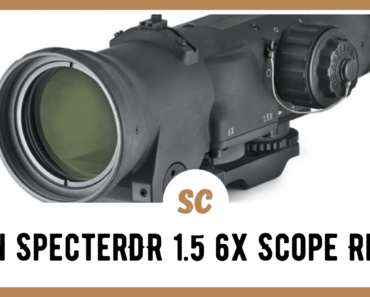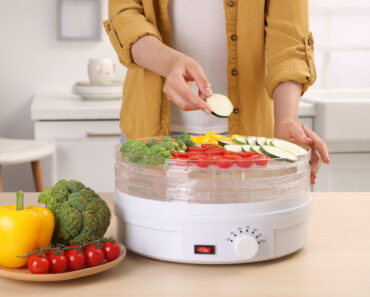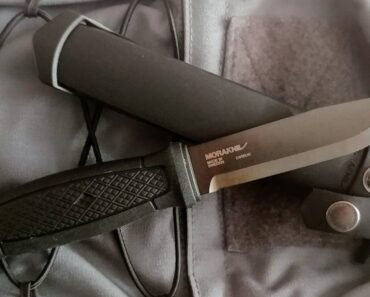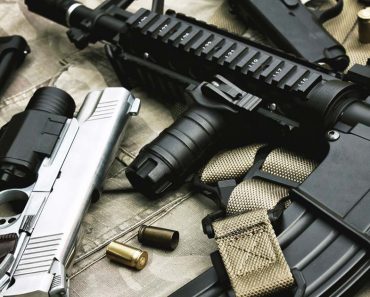The several types of compasses that survivalists and outdoorsmen most often carry can be divided into two general categories: larger (generally) land navigation compasses and smaller general direction compasses. The former include baseplate (with or without a case) and lensatic compasses and the latter include general direction button, rod magnet and various formats of SERE compasses, some of which are disguised as other objects and others are simply built small enough or in formfactors that they are easily hidden. This article is about the latter small general direction compasses.
General Direction Compasses
General direction compasses are so named because they lack a bearing ring to adjust for magnetic declination which is the difference between magnetic north and true north. Therefore, most small compasses point to magnetic north, not true north. Magnetic declination varies a little as the Earth’s magnetic field lines drift, but you can find the magnetic declination or any given area by consulting a magnetic declination map.
A notable exception to this rule is the Tru-Nord® compass which can be ordered already adjusted for your magnetic declination. I believe they have you specify the adjustment desired or can look it up if you specify a zip code or GPS coordinates when you place your order. However, if you travel, you’ll have to purchase a new compass for each location you travel that has had different magnetic declination adjustment or reconcile your adjusted magnetic declination with the proper magnetic declination of each new location.
It also costs almost as much as a full-sized Cammenga® tritium lensatic and more than most quality baseplate mirror sighting compasses.
Tru-Nord® compasses are available in button, zipper pull, pin-on, and wristband designs and are induction dampened.
General Direction Compass Types and Formfactors
When choosing which type of general direction compass is best for you, you should consider whether you may need to conceal the compass and how you intend to carry it.
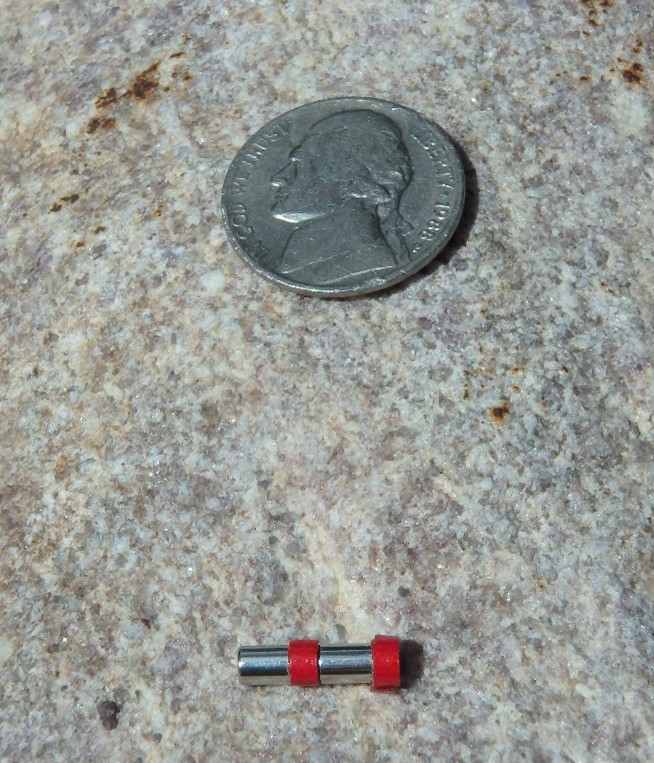
- Coin Compass -Designed to be disguised as pocket litter, coin compasses feature a grooved edge so they can be suspended a thread at least a meter long. Shomer-Tech® sells coin compasses in the U.S..
- Rod Magnet Compass – These are most easily made with a pair of small but powerful neodymium rod magnets which can be purchased from Magcraft®. Just mark the negative (north-pointing) pole of the magnets and clamp them on a length of threat at least a meter long. A narrow strip of high-quality reflective tape works great to mark the north-pointing pole.
Alternately, you can magnetize a ferrous metal rod. Needles and diamond rod saws are common choices for SERE equipment. This results in a weaker magnet, but there is a certain logic to adding uses to equipment that you already carry anyway so long as it doesn’t affect the item’s primary function.
The tiny size of rod magnet compasses makes them easy to hide. In fact, they are small enough that I include one in an aglet when I make a pair of composite bootlaces and shoelaces.
- Improvised Compasses – A general direction compass can be improvised from any rod-shaped ferrous metal object by stroking it with a strong magnet and marking the negative (north-pointing) pole. Sewing needles and diamond rod saws found in SERE kits are common candidates. They can be floated on a leaf or some other buoyant and lightweight object in a cup or bowl to find magnetic north.
- Ring Compass – Ring compasses are flat and can be carried in a SERE Belt with little risk of discovery or attached to a card and carried in your wallet if you’re not concerned about being relieved of your compass if robbed. To use a ring compass, you must float it in water which can be done in a leaf or the cap of a water bottle or canteen.
Brunton® sells a ring compass on a card of survival instructions. The instructions are underwhelming and it’s a little on the gimmicky sided but fills a niche for folks who want a credit-card formfactor compass or compass for a SERE belt or patch that’s hard to detect in a pat down.
Ring compasses are cut from the same material as refrigerator magnets. They are cut into a ring shape and then the north-facing (negative) pole is marked, or a ring-shaped compass rose is applied.
- Button Compass – Button compasses are the most common type of general direction SERE compass and range from 11 to 30mm (1/16” to 1 & 3/16”) in diameter or approximately the size of a button.
- Button Compass in Brass Case – Some compasses, such as the Marbles Brand® and the Tru-Nord® compasses, are button compasses that are encased in a non-ferrous brass case. This protects the compass, looks great, gives you a way to prevent the loss of your compass, and makes the compass feel like it is high quality, but can result in a substantial increase in weight if the case is too thick.
- Button Compass with Lanyard Ring – Button compasses and other small compasses are easily lost, and equipment loss is a common occurrence during survival ordeals. Important equipment gets set down or dropped and falls in the grass, mud, sand, or water and that’s that. Therefore, having some way to attach your compass to your person is highly recommended.
Many button compasses feature a groove suitable for attaching an improvised lanyard ring which can be made of twisted (and non-ferrous) brass wire to prevent loss.
The exception is if you may have to discreetly swallow a small button compass upon capture to be retrieved later. However, rod magnets can cause severe injury or death if swallowed so I strongly recommend that you do not swallow them.
- Zipper Pull Button Compass – Another way to prevent loss is to buy a compass in a case designed to be used as a zipper pull and then attach it to a zipper pull, lanyard or dummy cord.
- Wrist Button Compass – A non-ferrous wrist strap is a convenient way to carry a general direction compass. I like the Cammenga® tritium wrist compass. One drawback to carrying your compass on your wrist is that this carry method can make the compass more susceptible to damage. Cammenga®, Suunto®, and Tru-Nord® all make quality wrist compasses.
- Pin-On Compass – If you like to hike shirtless when it’s hot, this probably won’t work for you unless you’re into body piercings. Pin-on compasses are available in button and ball formfactors.
Liquid Filled vs. Dry Compasses
Military issue button compasses, such as the Cammenga® wrist compass, the Francis Baker FB1605 NATO Survival Button Compass (formerly manufactured by Pyser®), and button compasses issued in U.S.A.F. survival kits are often dry. The CountyComm® SERE and Mini Button compasses and Tru-Nord compasses are all dry compasses as well. The primary advantages of dry compasses are they will never form bubbles and the fluid won’t freeze in extreme cold temperatures.
The 14mm SERE compass by HardCase Survival® is one of the smaller, luminous, dampened button compasses and is available as a button compass and in a zipper pull. The Suunto® Clipper is a quality liquid-dampened wristband compass. Marbles makes a larger dampened button compass in a brass case that is decent quality and is easily removed from the case if so desired.
Bubbles in Wet Compasses
Bubbles form in wet compasses when they are exposed to sufficiently cold temperatures.
For this reason, wet compasses should not be carried in luggage that is stowed in unheated areas of vehicles or aircraft. Incidentally, your compass and other survival equipment permitted should be carried in your pockets. Survival gear is far more likely to be become separated from you in a crash if it’s carried in your luggage instead of on your person.
Will the Fluid in my Compass Freeze?
Fluid filled compasses may be filled with Isopar L or Isopar M depending on the desired viscosity, which has a freezing point of -53˚ C (-63˚ F). (Pure-Chemical, 2023). Kerosene can also be used. The freezing point of kerosene depends on the grade. Aviation fuel freezes at -47˚ C (-53˚ F) and 1-K grade kerosene freezes around -40˚ C (-40˚ F). (Wikipedia, 2023) So, if you are headed anywhere you might encounter temperatures near the freezing point of compass fluid, you’ll want a dry compass. That’s unlikely in the lower 48 states of the U.S., but it has happened a few times, and one such instance occurred in Peter Sink, not far from Cache Valley. The other instances of temperatures below -63˚ F happened in Montana.
I have noticed many instances of people recommending mineral oil as compass fluid, but the freezing point of mineral oil is -4˚ C (24˚ F) so it will freeze in sufficiently cold weather, which makes it a poor choice for compasses intended for use in survival kits. (Wikipedia, Wikipedia, 2023)
Luminous vs. Tritium
Some compasses feature luminous markings. The quality of luminous markings varies. A potential liability of tritium markings is there’s no “off” switch, so a band featuring a cover is necessary to maintain light discipline.
Compass Quality Standards and Water Resistance
Descriptions of button compasses sometimes specify AA quality, which is a quality standard. Unfortunately, unscrupulous vendors sometimes misrepresent the quality of generic compasses, so I advise buying button compasses of a quality brand or model and from a reputable vendor.
As mentioned earlier, the cost of quality general direction compass can approach or even exceed the cost of much more accurate and capable full-size baseplate or lensatic compasses. In my mind, paying up to $100 for a piece of lifesaving kit that I carry with me every day isn’t out of the question and is often cheaper than buying half a dozen or more poor-quality instruments, whose dependability is doubtful, over the same lifespan.
A brand with a lifetime warranty and good customer service is something to consider, because damaging a small, delicate instrument that you carry with you constantly is highly likely. I have lost count of how many compasses I have damaged over the years. However, most were baseplate compasses.
In 40 years of using and making compasses and teaching orienteering, the chief failures in button compasses I have experienced have been: failure of water-resistance (for dry compasses), leaking or the development of large bubbles (for wet compasses), inaccuracy, and the lens becoming too scratched up to see the reading clearly (zipper pull and wrist compasses with plastic or plexiglass lenses have been most vulnerable to this problem).
Usually, the lens cracks, gets scratched or the seal fails. If a compass capsule doesn’t have a watertight seal, moisture or saltwater ingress can ruin a dry compass and wet compasses will lead, developing air bubbles.
CountyComm claims that their SERE compass has a watertight DIN seal. Unfortunately, I only purchased one from them and the seal on mine was not watertight and it was ruined by being set face down in a puddle the size of a fifty-cent piece and about 1mm deep. A drip of liquid was enough to ruin it. It’s a shame because otherwise, it seemed like a great little dry luminous with a built-in lanyard ring for at a great price.
Whether that was an isolated defect, or an inherent flaw, I cannot say. But regardless of manufacturer claims, I strongly advise that you test compasses and other critical equipment before including them in a survival kit. Manufacturing processes and quality control are not perfect, after all, and your life may depend on it.
It’s also not a bad idea to carry a rod magnet compass to verify that your button compass is still accurate after knocking around in your survival kit. They hardly take up any room.



